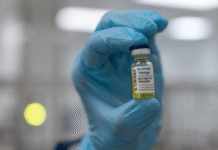

WHEN you see something labelled “biodegradable”, you instinctively assume it will degrade into nature much more quickly than conventional plastics. But, is that really the case?
The word “biodegradable” has become beguiling to people trying to make fast bucks, throwing dubious claims about biodegradability – which may seem too good to be true.
Plastics described as biodegradable can be made from bioplastics, plastics made from renewable biomass sources such as corn, algae or chitin – or from petrochemicals that have added elements that help them biodegrade.
While it is noble to look at using renewable sustainable products, the decision must be based on science, with measurable and verifiable data on Life Cycle Analysis.
There is much confusion surrounding these so called “eco-friendly” plastics, since there is no clear indication how long the materials take to degrade, and under what conditions.
A recent study by University of Plymouth’s International Marine Litter Research Unit found bags made of supposedly biodegradable materials remain unscathed and useable after being dropped in the sea or buried underground for three years.
The study also found a lack of clear evidence that biodegradable, oxo-biodegradable and compostable materials offered an environmental advantage over conventional plastics.
The research denotes that no material is magical and the right treatment of a product at its end of life is very important.
A 2015 report from the United Nations (UN) found that biodegradable plastics rarely break down fully in marine environments. These plastics require industrial composting units to be broken down at 50°C and that such conditions are rarely ever met in the marine environment.
The same principle also applies with the nonmarine environment. In landfills, the conditions will not be suitable for them to break down as landfills are engineered to eliminate moisture and to slow biodegradation. In fact, researchers have found in landfills 30-year-old newspapers, five-year-old lettuce and ten-year-old hotdog!
And if they eventually do, they will release methane, a greenhouse gas 23 times more potent than CO2.
Some biodegradable plastics fragment rather than biodegrade, due to the addition of oxidising agents. Rather than degrading, they break into tiny pieces which can increase risk of ingestion for animals and end up in our oceans and waterways. It is impossible to recover these kinds of plastics from the environment.
The UN report also concluded that widespread adoption of products labelled “biodegradable” could even encourage people to be more casual about littering.
The misconception about biodegradability is “If I throw it away, it will magically go back to nature”.
Biodegradable plastics should be sent to an industrial composter, because biodegradability does not mean that a product will degrade in any environment.
Degradation depends on factors such as time, temperature, humidity and the presence of bacteria in the specific environment.
But here are things to ponder: How many industry composters are available in our communities nationwide? Do we have sustainable compost collection system?
While your intention is well, before you use biodegradable plastics, make sure you know how to make them “disappear” after they are no longer in use.


















